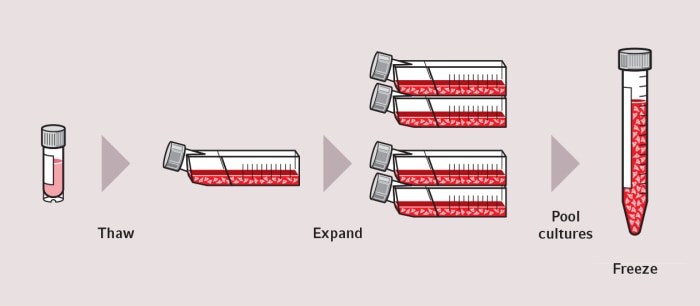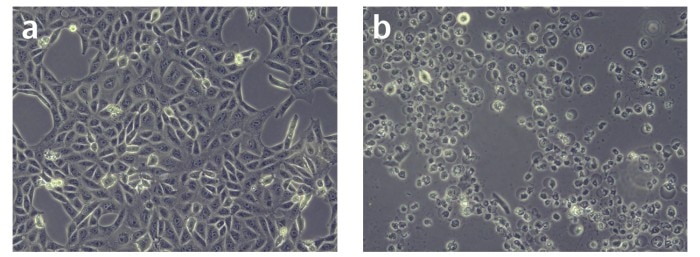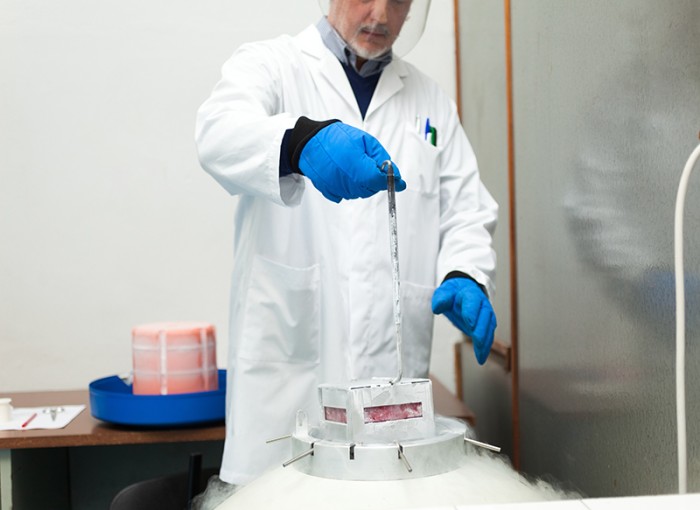MENU
FR | EUR
-
-
-
-
- Services pour bioprocédés
- Services pour centrifugeuse et rotors
- Service pour pipette
- Services pour Mastercycler
- Services pour automates de pipetage
- Services pour congélateurs
- Services pour incubateurs
- Services pour agitateurs
- Services pour appareils de photométrie
- Service de contrôle de la température et de l’agitation
-
-
-
-
-
- Services pour bioprocédés
- Services pour centrifugeuse et rotors
- Service pour pipette
- Services pour Mastercycler
- Services pour automates de pipetage
- Services pour congélateurs
- Services pour incubateurs
- Services pour agitateurs
- Services pour appareils de photométrie
- Service de contrôle de la température et de l’agitation
-
FR | EUR
Aucun résultat trouvé
Chercher des suggestions

How to thaw cells – Guide for more reproducible cryopreservation results
Lab Academy
- Biologie cellulaire
- Incubateurs à CO2
- Consommables pour culture cellulaire
- Culture cellulaire
- Cellules souches
- Le quotidien au labo
- Contamination
- Test
Cell thawing is an essential and sometimes undervalued element in all areas of cell-based research and production. A standardized cryopreservation process – including a standardized cell thawing protocol – helps to use cell stocks optimally for reproducible, reliable results.
Our White Paper “ ” highlights different aspects of the cell thawing process and includes the following chapters:
- Introduction
- How to thaw cells - Basics
- Cell thawing methods – comparison of different methods
- Considerations prior to selecting a cell thawing method
- Summary
Lire moins

Incorrect cell thawing can lead to abnormalities in cell shape after initial seeding. Example of normal (a) and abnormal (b) morphology of Vero cells (10 x).
How to thaw cells - Basics
Cell freezing and thawing require different rates of temperature change to ensure high cell viability. Cell freezing needs to occur at a slow, controlled cooling rate. In contrast, cell thawing works best when it is done quickly because the disappearance of ice around the cell does not have the same damaging effects as ice formation during cryopreservation. Therefore, it is preferable to bring the cells back to normal culture conditions as soon as possible, where (in the case of adherent cells) they can anchor to a surface.
Usually, a typical cell thawing protocol begins with removing cryovials from the liquid nitrogen tank. Here, it is important to be familiar with standard precautions for working with liquid nitrogen. Additionally, if a cryovial is not sealed properly and was stored in the liquid phase, liquid nitrogen may have seeped into the cryovial over time. This leads to a rapid pressure build-up inside the vial shortly after removing it from the liquid nitrogen tank. Therefore, wearing adequate face protection is necessary.
Usually, a typical cell thawing protocol begins with removing cryovials from the liquid nitrogen tank. Here, it is important to be familiar with standard precautions for working with liquid nitrogen. Additionally, if a cryovial is not sealed properly and was stored in the liquid phase, liquid nitrogen may have seeped into the cryovial over time. This leads to a rapid pressure build-up inside the vial shortly after removing it from the liquid nitrogen tank. Therefore, wearing adequate face protection is necessary.
Lire moins

Image source: Minerva Studio/shutterstock.com
Next, the cell suspension inside the vial must be thawed. A frequently used rule of thumb is that upon beginning the cell thawing process in a standard cryovial with 1 mL cell suspension, all ice needs to have disappeared within a few minutes. Rapid heating of the cell suspension prevents localized recrystallization during cell thawing, which can cause cellular damage [1]. Sometimes thawing cells within a few minutes is not possible, e.g. due to time spent to find the exact vial or due to distance between the location of the liquid nitrogen storage and the thawing location. In this case, it is preferable to leave the cryovials at the lowest possible temperature followed by rapid thawing instead of both slow thawing and leaving the cells in thawed freezing medium for longer than necessary [2].
When all ice has disappeared, any further adverse effects of the cryoprotective agent on the cells need to be minimized by two possible ways. Cells can be either cultured directly after thawing, for example in a T-flask, while ensuring the freezing medium is diluted by at least a factor of ten with normal cell culture medium. Alternatively, it is possible to dilute the freezing medium with normal cell culture medium, centrifuge the tube, discard the medium, and resuspend the thawed cells in fresh culture medium [2, 3, 4]. To check that the cell thawing protocol was successful, it is recommended to determine the percentage of viable cells (e.g. with a trypan blue staining and a cell counter) [5].
To improve cell thawing standardization, it is good practice to monitor the cell culture over several days for any abnormalities in shape or growth rate (see image at the top for an example). Poor or inconsistent cell growth can be a sign of cell stock problems or problems within the cryopreservation process. Therefore, early detection can help to minimize experimental errors.
Different methods and equipment exist to thaw cells in cryovials – water bath, hand-warming, bead bath, and dedicated devices.
Read more about the advantages and disadvantages of different cell thawing methods, as well as lab- and cell-type specific considerations in our White Paper “Cell Thawing Protocol Standardization - Guide for More Reproducible Cryopreservation Results” -
When all ice has disappeared, any further adverse effects of the cryoprotective agent on the cells need to be minimized by two possible ways. Cells can be either cultured directly after thawing, for example in a T-flask, while ensuring the freezing medium is diluted by at least a factor of ten with normal cell culture medium. Alternatively, it is possible to dilute the freezing medium with normal cell culture medium, centrifuge the tube, discard the medium, and resuspend the thawed cells in fresh culture medium [2, 3, 4]. To check that the cell thawing protocol was successful, it is recommended to determine the percentage of viable cells (e.g. with a trypan blue staining and a cell counter) [5].
To improve cell thawing standardization, it is good practice to monitor the cell culture over several days for any abnormalities in shape or growth rate (see image at the top for an example). Poor or inconsistent cell growth can be a sign of cell stock problems or problems within the cryopreservation process. Therefore, early detection can help to minimize experimental errors.
How to thaw cells – Advantages and disadvantages of different methods
Different methods and equipment exist to thaw cells in cryovials – water bath, hand-warming, bead bath, and dedicated devices. Read more about the advantages and disadvantages of different cell thawing methods, as well as lab- and cell-type specific considerations in our White Paper “Cell Thawing Protocol Standardization - Guide for More Reproducible Cryopreservation Results” -
Lire moins
References
[1] Hunt, CJ. Technical Considerations in the Freezing, Low-Temperature Storage and Thawing of Stem Cells for Cellular Therapies. Transfusion Medicine and Hemotherapy 2019; 46: 134–149.
[2] Baust, JM et al. Best practices for cryopreserving, thawing, recovering, and assessing cells. In Vitro Cellular & Developmental Biology – Animal 2017.
[3] www.lgcstandards-atcc.org/Documents/Marketing_Literature/Animal_Cell_Culture_Guide/Cryopreservation.aspx
[4] www.lgcstandards-atcc.org/How_to_Revive_Cultures.aspx
[5] Strober, W. Trypan Blue Exclusion Test of Cell Viability. Current Protocols in Immunology 2019.
[2] Baust, JM et al. Best practices for cryopreserving, thawing, recovering, and assessing cells. In Vitro Cellular & Developmental Biology – Animal 2017.
[3] www.lgcstandards-atcc.org/Documents/Marketing_Literature/Animal_Cell_Culture_Guide/Cryopreservation.aspx
[4] www.lgcstandards-atcc.org/How_to_Revive_Cultures.aspx
[5] Strober, W. Trypan Blue Exclusion Test of Cell Viability. Current Protocols in Immunology 2019.
Lire moins

